John Wayne in Arizona
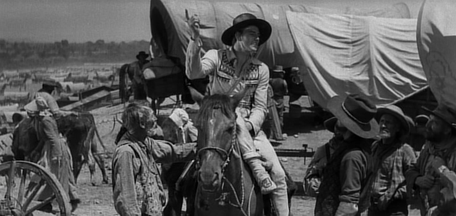
Young Duke shot his first scene under the name of John Wayne in Yuma, Arizona, the first location of The Big Trail. A few miles from Yuma, at a river flat of the Colorado, Fox had built a pioneer town, then the biggest set ever built on location – more than forty buildings. They shot on this location for 16 days. For the duration in Yuma, the cast stayed at the Hotel del Ming, 300 Gila Street. It was then just a few years old and is now listed on the National Register of Historic Places.
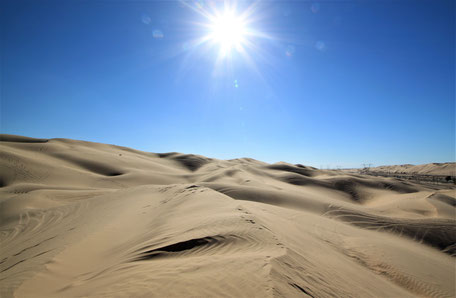
The Big Trail production then moved on to the Imperial County Sand Dunes, located west of Yuma, for the desert scenes. Interstate 8 travels through the southern portion of the dunes. Most filming took place in the Buttercup Valley area of the sand dunes, north of the interstate.

Two years after The Big Trail, Wayne was back on this location, filming The Big Stampede at a ranch west of Yuma. And he was back on those hot sand dunes the same year once more, for the Mascot serial The Three Musketeers. Wayne always remembered how the temperature hit 120 degrees during the day.

The Yuma Penitentiary (now the Yuma Territorial Prison State Historic Park at 220 Prison Hill Rd) was used as an Arab stronghold in The Three Musketeers. Its Sally Port was used as a heavily fought fort entrance.
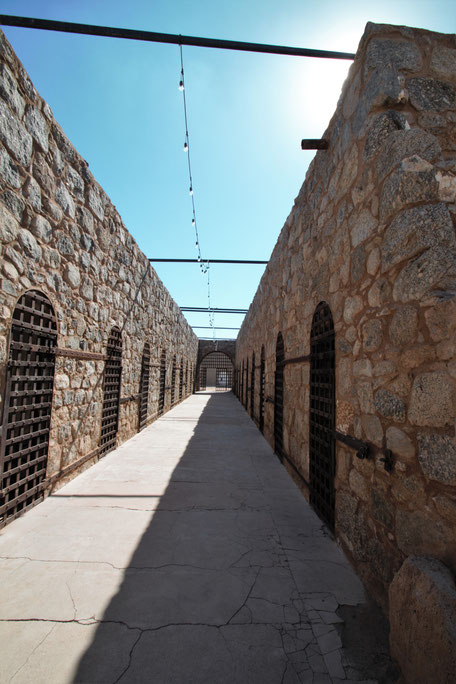
The Yuma Penitentiary was pend for business in 1876 and closed in 1909. After that, it was used as a shelter for the homeless during the Depression. It was at this time that the Mascot serial The Three Musketeers put it to good use. They gave the prison buildings a face-lift to remotely resemble the Arab headquarters.
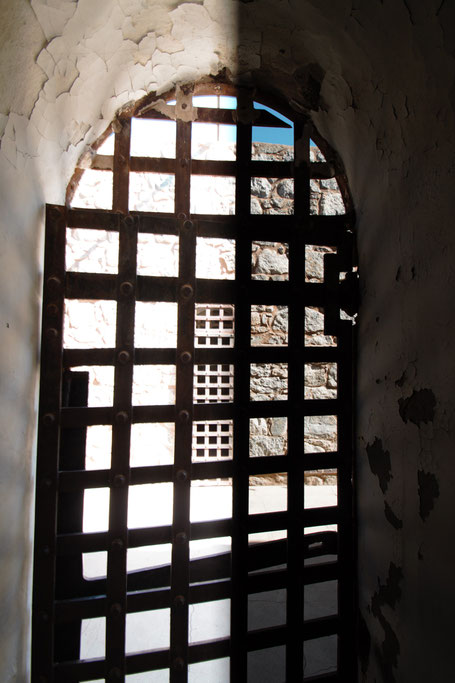
Actual prison cells were utilized to jail Wayne and his fellow „Musketeers“. This is the inside of the cell Wayne was jailed in. During its thirty-three years of operation, a total of 3,069 prisoners did time here.

Near the Elgin area, south of Highway 82 and just east of the Mustang Mountains, Howard Hawks chose Rain Valley for the outdoor scenes of Red River in 1946, and rented part of the valley. The first sequence, as Dunson leaves the wagon train, used the eastern side of the Mustang Mountains as a background, just south of Arizona State Highway 82.

When Tom Dunson sees his dream realized over a montage that gives the impression that 14 years have passed, these scenes were shot at the Empire Ranch, near Elgin. In 1976, the ranch house was listed in the National Register of Historic Places. Red River started it as a movie location.

Tom Dunson rides out the ranch gate in the beginning of the cattle drive. The grasslands that surround the Empire Ranch, with the distinctive dome-topped Biscuit Mountain in the background, were later seen in other classics like Gunfight at the OK Corral.

Elgin, forty miles east of Nogales, became the anchor town for the Red River company because the tiny town had a railroad depot back then. The construction of an eighty-eight-mile railroad line had begun in 1882, called the New Mexico and Arizona Railroad. Hawks had the town of Abilene built by adding more buildings to the tiny village. The classic fight scene at the Elgin railroad depot took four days to shoot.
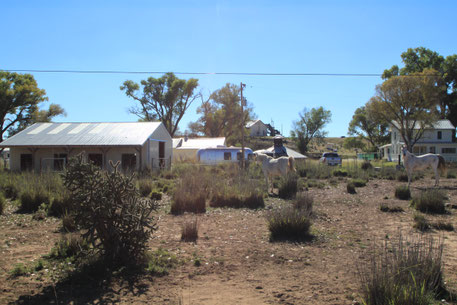
The railroad line was discontinued in 1962. If you go looking for this Red River filming site at Upper Elgin Road, you'll still find traces where the tracks were originally laid. A well and a pump house was visible in the climactic fistfight between Wayne and Montgomery Clift and still exist. That same structure can be spotted in Gunfight at the O.K. Corral (the railroad section in the Dodge City scenes) and 3:10 to Yuma (Glenn Ford's finally confronts his old gang at the railroad station). In 1955, the Rodgers & Hammerstein musical Oklahoma! used the same set up.

For the famous river crossing scene, Hawks used the San Pedro River near Tombstone.
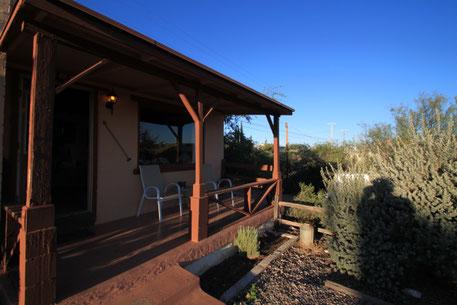
Starting with location work for Red River, he stayed at the Sagebrush Inn whenever he got to Tombstone, “the town to tough to die”.

McLintock's brick ranch house was the lavish mansion of the cattle baron Colonel William Greene, thirty-six miles east of Nogales. Wayne and Bob Shelton, founder of Old Tucson studios, asked personally for permission to use the Old Scharp’s Ranch House. On their first try, Mrs. Green threw them out. The ranch house on 2036 Duquesne Road in Patagonia is now the San Rafael Ranch, preserved in the San Rafael State Natural Area.
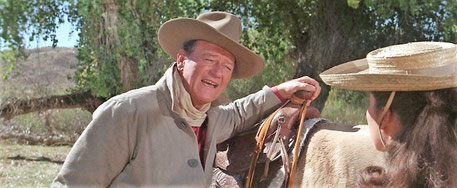
Not far from the San Rafael Ranch, east of Nogales, McLintock goes pheasant hunting on the Ralph Wingfield Ranch.
©All text content on this website is protected by copyright and other intellectual property laws. No part may be reproduced without the prior written permission. All photos courtesy of Roland Schaefli, unless otherwise stated.
This website is in no way associated with the John Wayne Estate or business enterprises. Go to johnwayne.com to find the official website and to https://johnwayne.org/ to read about the wonderful John Wayne Cancer Foundation.
more john wayne locations to scout
If you like this site, you'll like the book: the first comprehensive guide to the John Wayne Locations, with hundreds of then-and-now photos, unpublished behind-the-scenes-pictures and detailed tour descriptions
Tracking John Wayne: The complete Tourguide
Find directions to locations and anecdotes from the Duke's movie sets in this new publication from McFarland, available at bookstores and online shops
For all locations mentioned on this website, the book offers behind-the-scenes stories, making-of anecdotes and never before published photos

